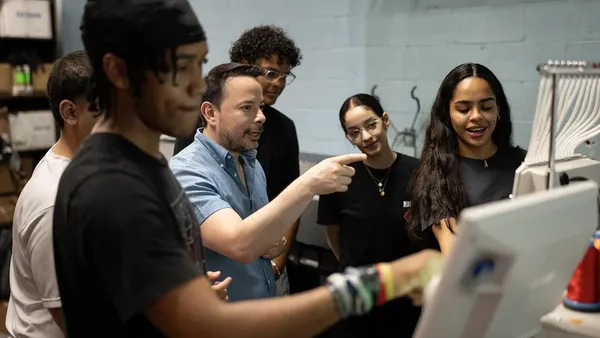Dive Brief:
- Andrew Simmons, who teaches English at San Rafael High School in California, found himself teaching John Steinbeck’s novella “Of Mice and Men” and the theme of misogyny in the story, at the same time of the public hearings around Brett Kavanaugh’s confirmation to the U.S. Supreme Court. Simmons believes weaving educational lessons with what’s happening in the world is crucial, he wrote in Edutopia.
- Students are taught to apply critical thinking skills to the work they do in the classroom — tools that they hopefully carry with them as they make choices as adults. Reading a fictional story, and seeing the consequences of a character’s action, may also help inform decisions students make in real life, too.
- Simmons asked his students if they want educators to bring current events into their classroom lessons. Pupils said yes, adding that having the space to discuss current topics, and in their own way, was helpful.
Dive Insight:
Lessons taught in English and social studies courses are easily connected to current events, bringing contextual details into classroom themes. Not every current event neatly dovetails with a classroom project. But administrators and educators can help students make the correlation by asking simple questions about the similarities and differences between what they’re reading and studying and the events happening around them today.
These are questions posted on the Public Schools of Robeson County’s website in North Carolina, which gives educators a rubric to follow, including simple queries teachers can pose to students, particularly around reading comprehension, to help them connect what they’re studying to their own lives.
ThinkCERCA, a literacy platform online, wrote about a class that tied the Keystone protests at Standing Rock and the Black Lives Matter movement to Sophocles’ Greek play “Antigone.” Students were able to make parallel comparisons to a play written more than 2,400 years ago.
Teaching Tolerance also offers numerous ways to tie current events to the past, particularly those tied to the Civil Rights Movement of the 1950s and 1960s, as recently reported. With careful planning, educators can contextualize topics in literature, English and social studies classes with current events — helping students see how something they’re studying in their classroom can impact their lives today.




 Dive Awards
Dive Awards







